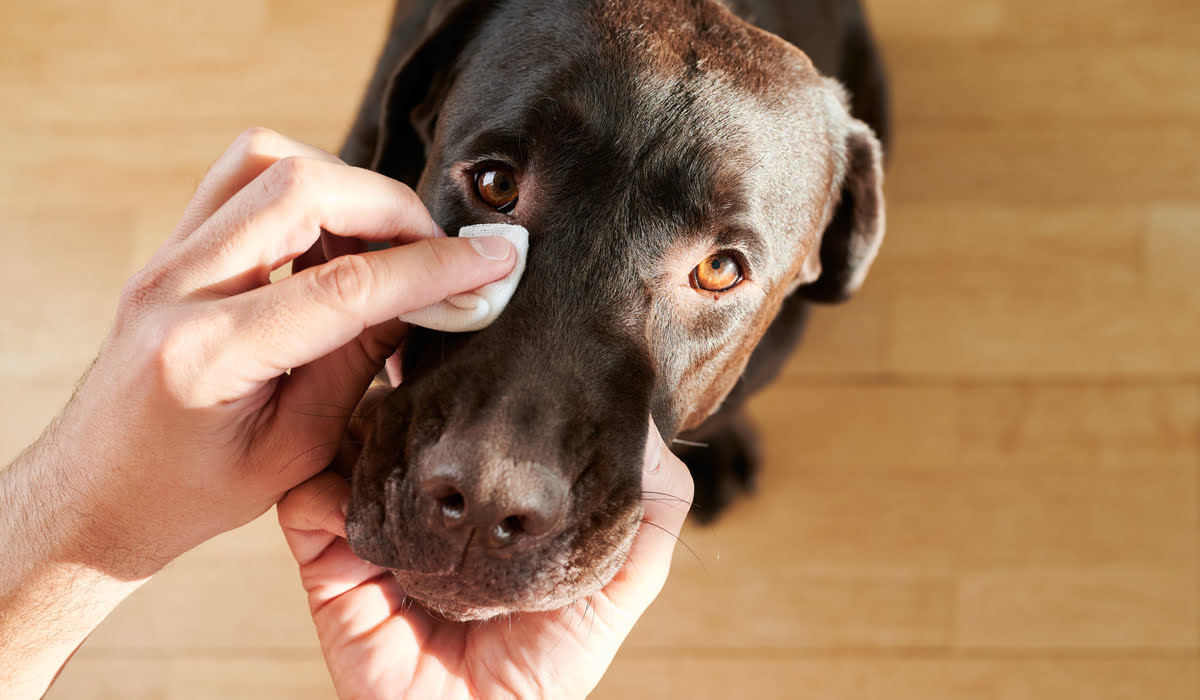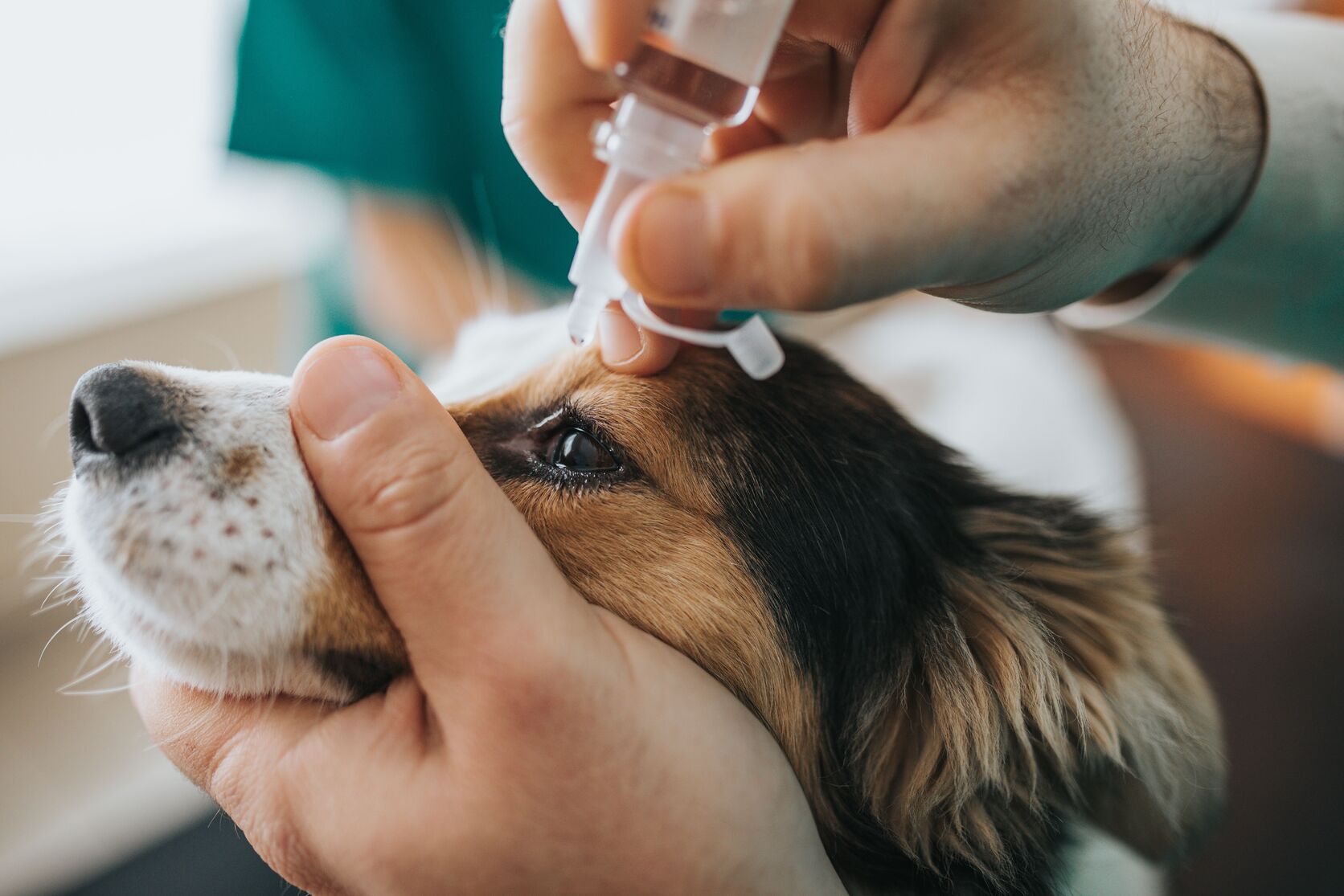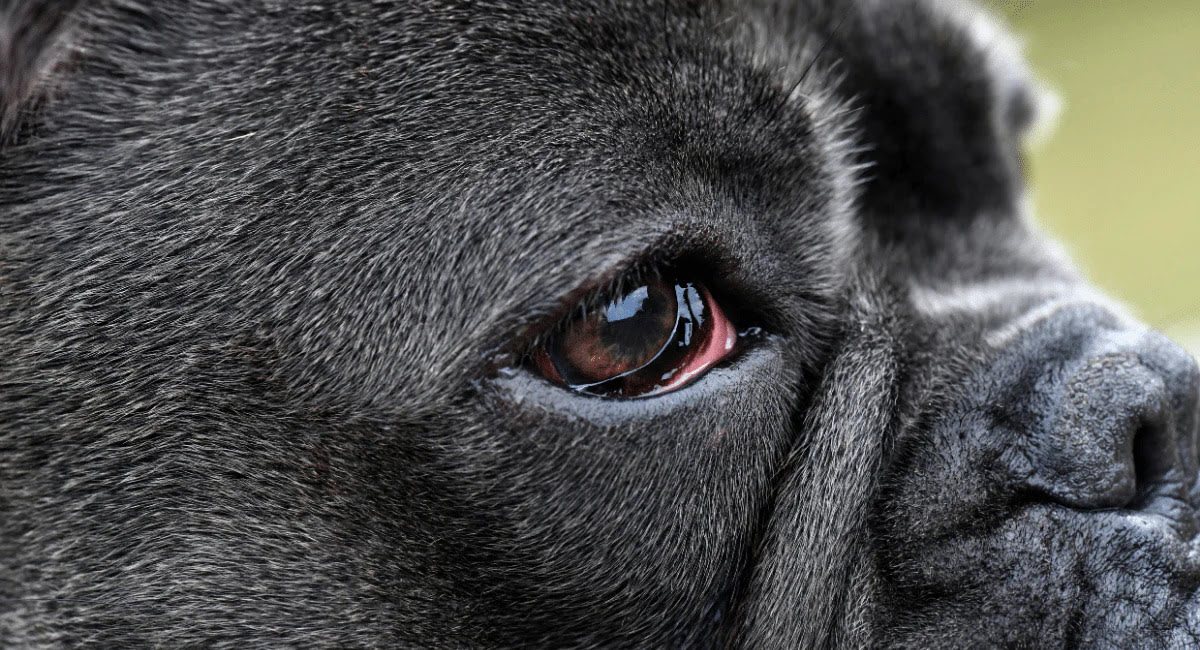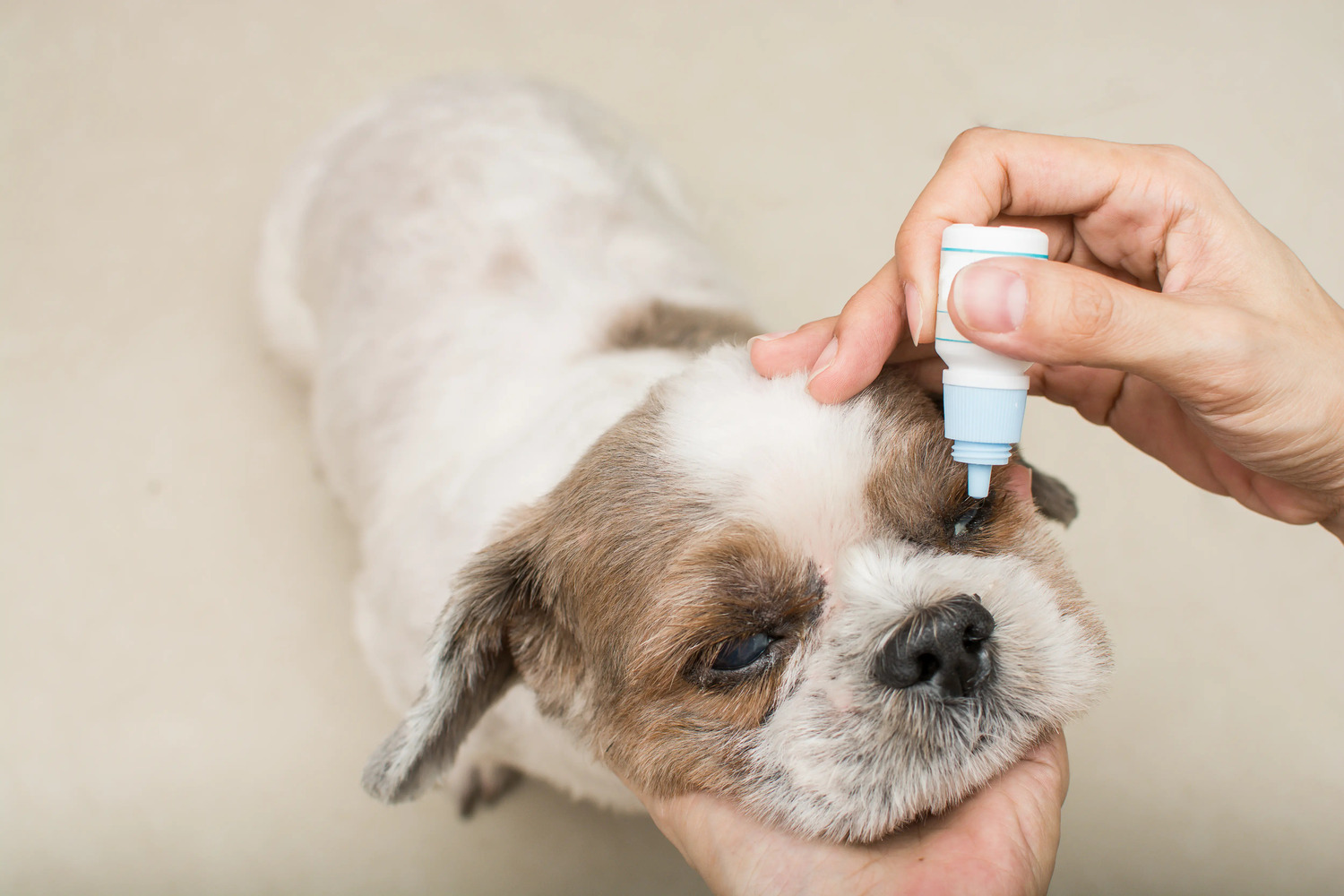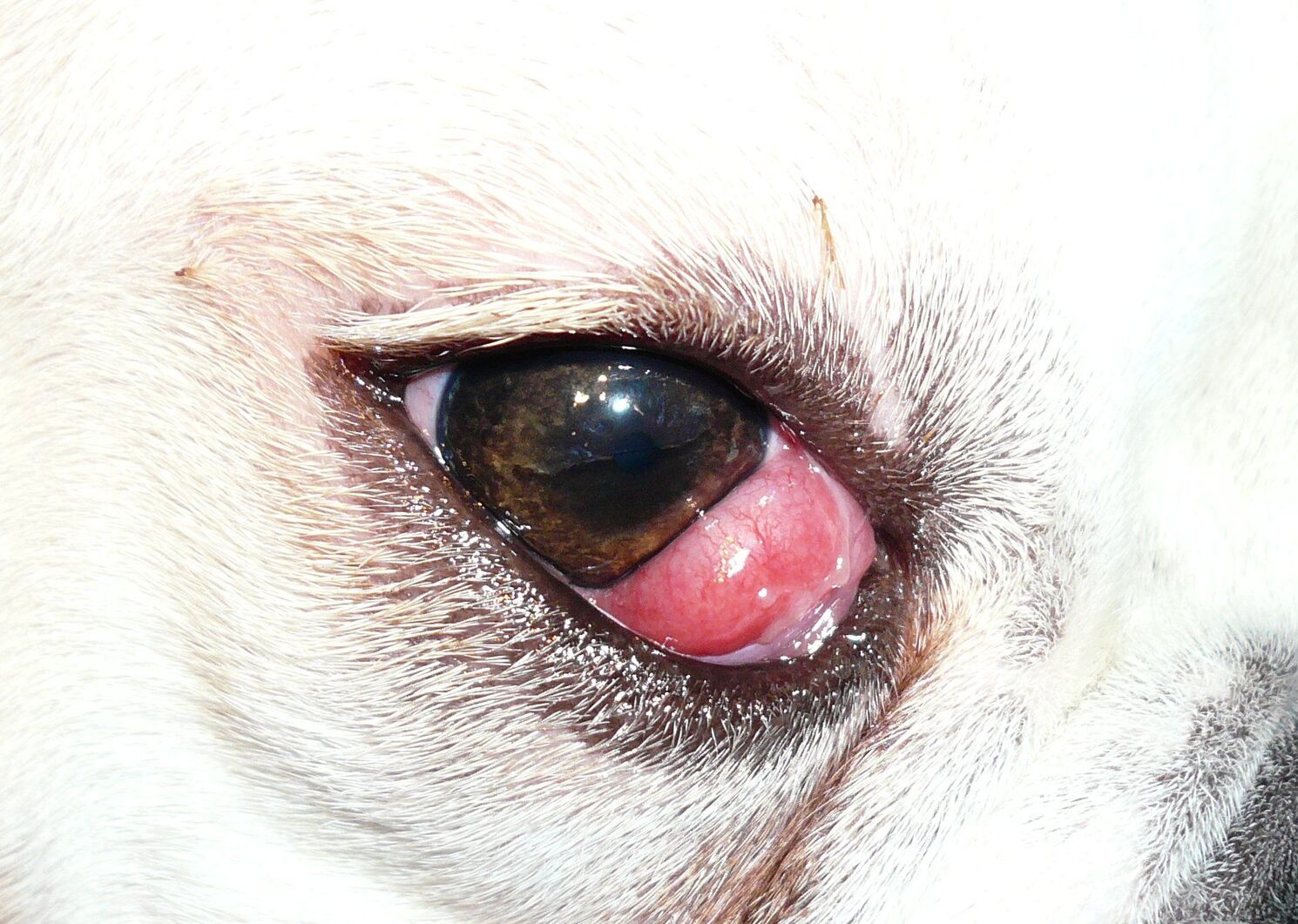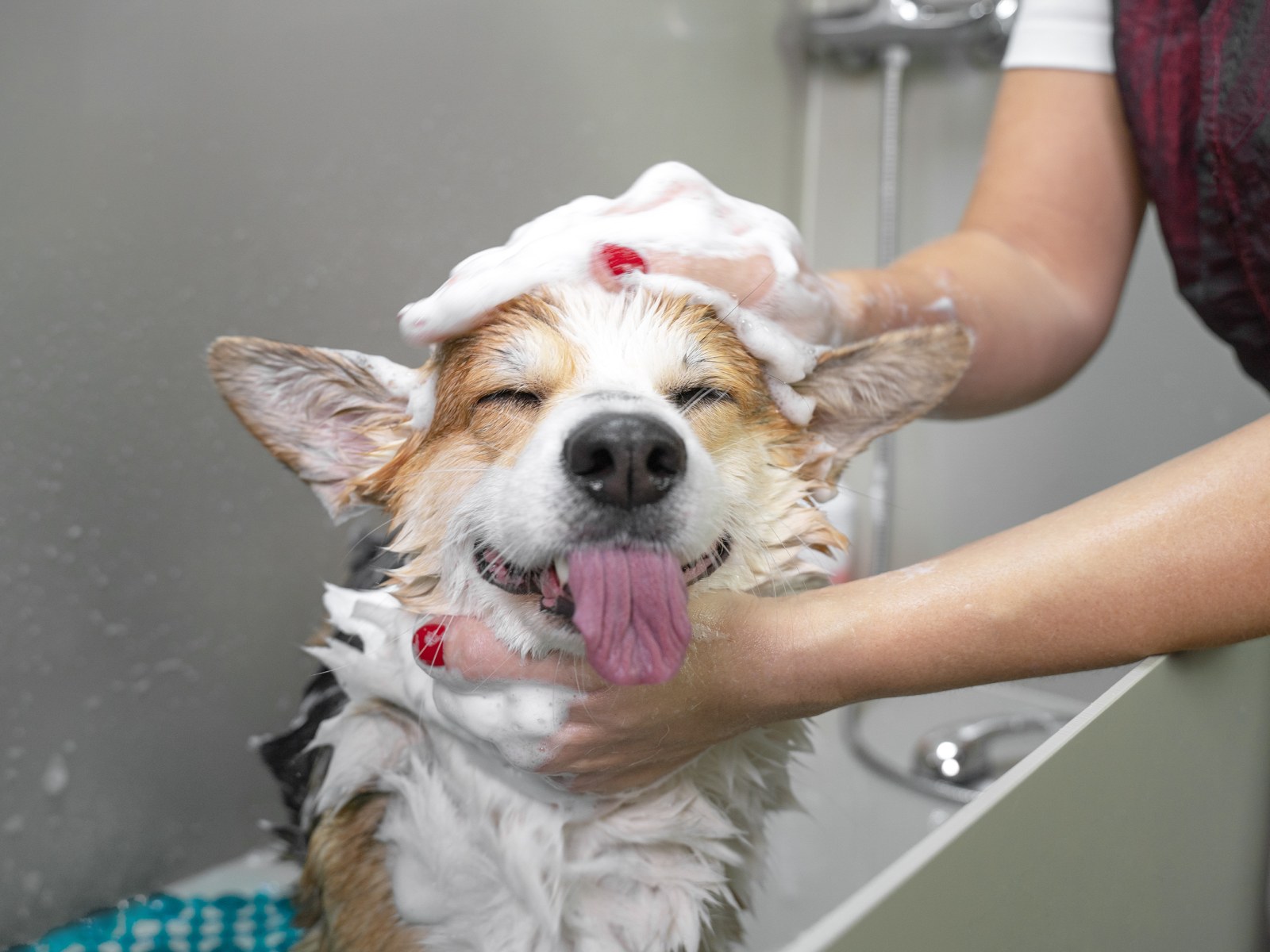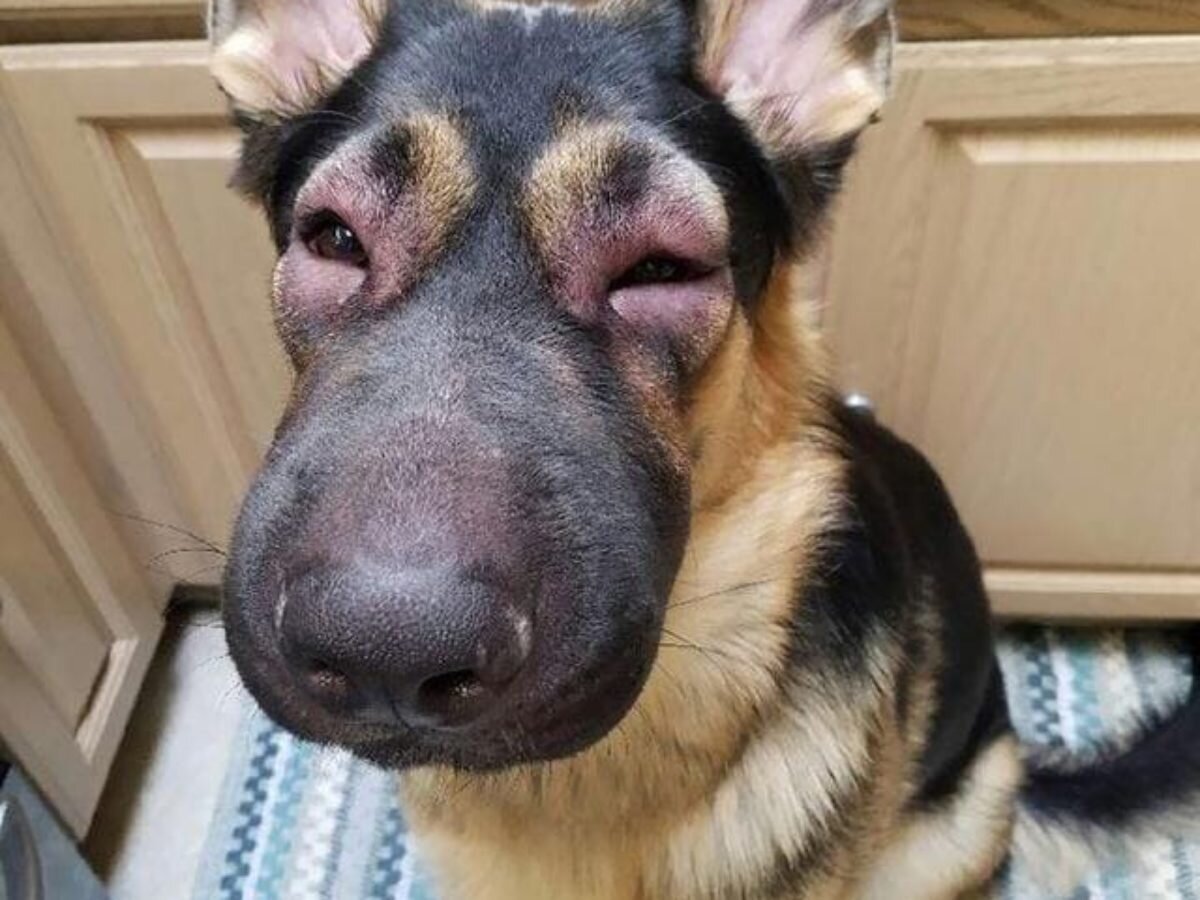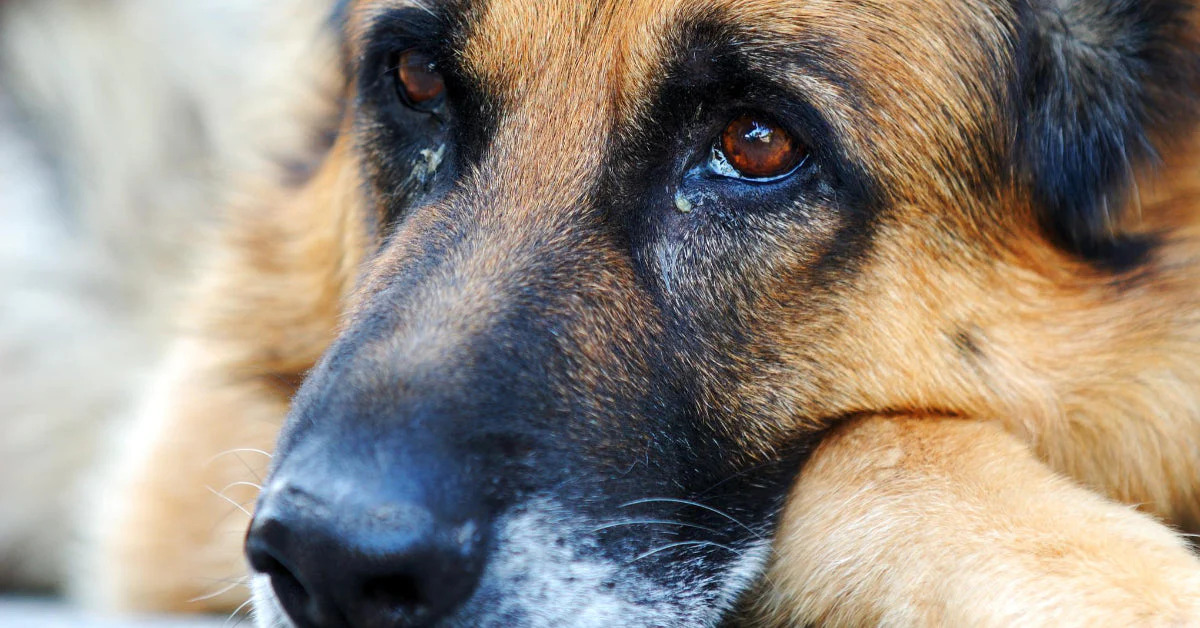Home>Health & Wellness>Common Health Issues>Eye and Ear Health>Dog’s Watery Eye: What Is It?


Eye and Ear Health
Dog’s Watery Eye: What Is It?
Published: February 12, 2024
Learn about the causes and treatment of your dog's watery eye, and how to maintain their eye and ear health. Expert advice on managing eye and ear issues.
(Many of the links in this article redirect to a specific reviewed product. Your purchase of these products through affiliate links helps to generate commission for Pawsomeoldies.com, at no extra cost. Learn more)
Table of Contents
Introduction
Watery eyes in dogs can be a common occurrence, often causing concern for pet owners. Just like humans, dogs can experience excessive tearing, which may manifest as watery eyes. This condition, known as epiphora, can be attributed to various underlying factors, ranging from environmental irritants to more serious health issues. Understanding the causes, symptoms, and treatment options for watery eyes in dogs is crucial for ensuring the well-being of our furry companions.
Excessive tearing in dogs can result in damp fur around the eyes, tear stains, and discomfort for the animal. While occasional tearing is normal, persistent or excessive watery eyes may indicate an underlying problem that requires attention. As responsible pet owners, it's essential to be aware of the potential causes and symptoms associated with this condition, as well as the appropriate steps to take in addressing it.
By delving into the common causes of watery eyes in dogs, we can gain valuable insights into the factors that may contribute to this issue. Additionally, understanding the symptoms to look out for and the appropriate course of action to take when seeking veterinary care is paramount in ensuring the overall health and well-being of our beloved canine companions.
In this comprehensive guide, we will explore the various aspects of watery eyes in dogs, shedding light on the potential causes, symptoms, treatment options, and preventive measures. By equipping ourselves with this knowledge, we can better understand and address this common concern, ultimately promoting the health and happiness of our canine friends.
Read more: What Causes A Dog’s Eye To Twitch
Common Causes of Watery Eyes in Dogs
Excessive tearing, or epiphora, in dogs can stem from a variety of factors, ranging from benign to more serious underlying issues. Understanding the common causes of watery eyes in dogs is essential for identifying potential triggers and addressing the root of the problem. Here are some prevalent factors that can contribute to this condition:
-
Allergies: Dogs, like humans, can be susceptible to environmental allergens such as pollen, dust, and mold. When exposed to these allergens, dogs may experience watery eyes as a result of the body's immune response.
-
Eye Irritants: Foreign particles, such as dust, smoke, or chemicals, can irritate a dog's eyes, leading to excessive tearing. Additionally, physical irritants like long fur or eyelashes rubbing against the eyes can also cause watery eyes.
-
Blocked Tear Ducts: Blockages in the tear ducts can impede the proper drainage of tears, resulting in overflow and watery eyes. This blockage can be caused by congenital abnormalities or acquired conditions such as infections or inflammation.
-
Eye Infections: Bacterial or viral infections, such as conjunctivitis, can lead to inflammation and increased tear production in dogs. These infections can be accompanied by other symptoms such as redness, discharge, and discomfort.
-
Corneal Ulcers: Corneal ulcers, which are injuries to the outer layer of the eye, can cause excessive tearing as the eye attempts to protect and heal itself. These ulcers can be the result of trauma, foreign objects, or underlying eye conditions.
-
Ingrown Eyelids: Entropion, a condition where the eyelids roll inward, can cause the eyelashes to rub against the surface of the eye, leading to irritation and watery eyes.
-
Teething: Puppies undergoing the teething process may experience increased tear production due to the discomfort and inflammation associated with this developmental stage.
-
Underlying Health Issues: Certain systemic health conditions, such as respiratory infections, dental problems, or anatomical abnormalities, can contribute to watery eyes in dogs.
By recognizing these common causes of watery eyes in dogs, pet owners can gain valuable insights into the potential triggers of this condition. Identifying the underlying cause is crucial for implementing appropriate treatment and preventive measures, ultimately promoting the comfort and well-being of our canine companions.
Symptoms to Look Out For
Identifying the symptoms associated with watery eyes in dogs is pivotal in recognizing potential underlying issues and addressing them promptly. While excessive tearing itself is a prominent indicator of this condition, there are additional symptoms that pet owners should be vigilant about. These symptoms can provide valuable insights into the nature and severity of the underlying cause, guiding the appropriate course of action. Here are the key symptoms to look out for:
-
Tear Stains: Persistent dampness and discoloration around the eyes, often referred to as tear stains, can indicate chronic tearing. These stains may appear reddish-brown in color and can be particularly noticeable in dogs with light-colored fur. The presence of tear stains can signal ongoing tear production and potential underlying issues that require attention.
-
Eye Discharge: Unusual or excessive discharge from the eyes, characterized by a change in color, consistency, or odor, can be indicative of an underlying eye infection or inflammation. Discharge may range from clear and watery to thick and purulent, and its presence warrants further investigation by a veterinary professional.
-
Redness and Irritation: Inflamed or reddened conjunctiva, the delicate membrane covering the inner surface of the eyelids and the whites of the eyes, can accompany watery eyes in dogs. This redness may be accompanied by visible discomfort, such as pawing at the eyes or increased blinking, signaling potential irritation or underlying eye conditions.
-
Squinting or Blinking: Dogs experiencing discomfort or pain due to underlying eye issues may exhibit increased squinting or blinking. This behavior serves as a protective mechanism, as the animal attempts to shield the affected eye from further irritation or discomfort.
-
Rubbing or Pawing at the Eyes: Persistent rubbing or pawing at the eyes can indicate discomfort, itching, or irritation. Dogs may exhibit this behavior in an attempt to alleviate discomfort caused by excessive tearing or underlying eye conditions.
-
Visible Eye Abnormalities: Any noticeable changes in the appearance of the eyes, such as cloudiness, swelling, or abnormal growths, warrant immediate attention. These abnormalities may be indicative of more serious underlying issues that require prompt evaluation and treatment.
By remaining attentive to these symptoms and promptly seeking veterinary care when they arise, pet owners can ensure the early detection and appropriate management of potential eye-related concerns in their canine companions. Recognizing these symptoms serves as a proactive approach to safeguarding the ocular health and overall well-being of our beloved dogs.
When to Seek Veterinary Care
Recognizing the appropriate timing to seek veterinary care for a dog exhibiting watery eyes and associated symptoms is crucial in addressing potential underlying issues and ensuring the well-being of the animal. While occasional tearing may not necessarily warrant immediate veterinary attention, certain signs and circumstances should prompt pet owners to seek professional evaluation and guidance. Here are the key indicators that signify the need for veterinary care:
-
Persistent or Excessive Symptoms: If a dog's watery eyes are accompanied by persistent tear stains, unusual eye discharge, redness, or visible discomfort, it is essential to seek veterinary care. These symptoms may indicate underlying eye infections, irritations, or more serious ocular conditions that require professional assessment and treatment.
-
Sudden Onset of Symptoms: The sudden onset of watery eyes, especially when accompanied by other concerning symptoms such as squinting, pawing at the eyes, or visible abnormalities, warrants prompt veterinary attention. Rapid changes in ocular health can signify acute issues that necessitate immediate evaluation by a qualified veterinarian.
-
Changes in Behavior: If a dog exhibits changes in behavior, such as increased sensitivity to light, reluctance to open the affected eye, or signs of discomfort when touched around the eyes, it is advisable to seek veterinary care. Behavioral changes can indicate pain, discomfort, or vision-related issues that require professional assessment and management.
-
Chronic or Recurrent Symptoms: Dogs experiencing chronic or recurrent watery eyes, tear stains, or related symptoms should undergo thorough veterinary evaluation. Persistent issues may signify underlying health conditions that necessitate comprehensive assessment and targeted treatment to address the root cause.
-
Visible Eye Abnormalities: Any noticeable abnormalities in the appearance of the eyes, including cloudiness, swelling, or unusual growths, should prompt immediate veterinary care. These visual abnormalities may indicate serious underlying issues that require timely intervention to prevent potential complications.
By remaining attentive to these indicators and promptly seeking veterinary care when necessary, pet owners can ensure the timely diagnosis and appropriate management of potential eye-related concerns in their canine companions. Early intervention and professional guidance play a pivotal role in safeguarding the ocular health and overall well-being of dogs, ultimately promoting their comfort and quality of life.
Treatment Options
Addressing watery eyes in dogs often involves a multifaceted approach aimed at identifying and managing the underlying cause while alleviating discomfort and promoting ocular health. The appropriate treatment options may vary depending on the specific trigger of the excessive tearing and associated symptoms. Here are the key treatment modalities commonly employed in managing watery eyes in dogs:
-
Veterinary Evaluation: When a dog presents with watery eyes and related symptoms, a comprehensive veterinary evaluation is essential. This typically involves a thorough physical examination of the eyes, assessment of tear production, and, if necessary, diagnostic tests such as eye staining to detect corneal ulcers or ocular foreign bodies. The veterinarian may also inquire about the dog's medical history and any recent changes in the environment or routine that could contribute to the condition.
-
Medication: Depending on the underlying cause, the veterinarian may prescribe topical ophthalmic medications such as antibiotic or anti-inflammatory eye drops to address infections, inflammations, or irritations. In cases of blocked tear ducts, medications aimed at reducing inflammation and promoting tear drainage may be recommended. Additionally, oral medications, such as antihistamines or antibiotics, may be prescribed to manage allergies or systemic infections contributing to watery eyes.
-
Surgical Intervention: In instances where anatomical abnormalities, such as entropion or ingrown eyelids, contribute to watery eyes, surgical correction may be necessary. Surgical procedures aimed at repositioning the eyelids or addressing structural issues can alleviate the underlying cause of excessive tearing and promote ocular comfort.
-
Tear Duct Flushing: For dogs with blocked tear ducts, a procedure known as tear duct flushing may be performed to clear obstructions and restore proper tear drainage. This minimally invasive procedure can help alleviate excessive tearing and prevent recurrent issues associated with tear duct blockages.
-
Environmental Management: In cases where environmental allergens contribute to watery eyes, environmental modifications may be recommended. This can include minimizing exposure to potential allergens, such as dust or pollen, and using air purifiers or humidifiers to maintain a clean and comfortable indoor environment for the dog.
-
Nutritional Supplements: Certain nutritional supplements, such as omega-3 fatty acids, may be beneficial in promoting ocular health and reducing inflammation associated with watery eyes. These supplements can support overall eye function and contribute to the management of ocular conditions in dogs.
-
Lifestyle Adjustments: Depending on the underlying cause, lifestyle adjustments such as grooming practices, eye hygiene, and preventive measures to minimize eye irritants may be advised. This can include regular grooming to prevent fur from obstructing the eyes and implementing measures to reduce eye irritation from environmental factors.
By implementing these treatment options in a targeted and comprehensive manner, pet owners can effectively address the underlying causes of watery eyes in dogs while promoting ocular comfort and overall well-being. It is essential to follow the guidance of a qualified veterinarian and adhere to the prescribed treatment plan to ensure the optimal management of this common concern in canine companions.
Read more: What Is The Rarest Eye Color In Dogs
Preventing Watery Eyes in Dogs
Preventing watery eyes in dogs encompasses proactive measures aimed at minimizing potential triggers and promoting overall ocular health. By implementing preventive strategies, pet owners can play a pivotal role in safeguarding their canine companions from the discomfort and potential complications associated with excessive tearing. Here are key preventive measures to consider:
-
Regular Eye Care: Incorporating regular eye care into a dog's grooming routine can help prevent potential irritants and debris from accumulating around the eyes. Gently wiping the area around the eyes with a damp, soft cloth can aid in maintaining ocular hygiene and reducing the likelihood of eye irritations.
-
Environmental Modifications: Creating a clean and allergen-free environment can contribute to minimizing potential triggers for watery eyes in dogs. This can involve using air purifiers to reduce indoor allergens, keeping the living space free from smoke and strong odors, and maintaining a clean and dust-free living environment.
-
Proper Grooming: Ensuring that a dog's fur around the eyes is trimmed and kept free from obstructing the vision can help prevent irritation and excessive tearing. Regular grooming practices, including the careful trimming of facial fur, can minimize the likelihood of fur-related eye irritations.
-
Eye Protection: When engaging in outdoor activities, particularly in windy or dusty environments, protecting a dog's eyes with appropriate eyewear or goggles can help shield the eyes from potential irritants and foreign particles. This is particularly beneficial for dogs prone to eye sensitivity or those with a history of ocular issues.
-
Balanced Nutrition: Providing a well-balanced diet that includes essential nutrients, such as omega-3 fatty acids and vitamins beneficial for ocular health, can contribute to maintaining healthy eyes in dogs. Consultation with a veterinarian regarding suitable dietary supplements can aid in promoting overall eye function and minimizing inflammation.
-
Regular Veterinary Check-ups: Scheduling routine veterinary examinations allows for the early detection of potential eye-related issues and the implementation of preventive measures. Veterinarians can assess ocular health, provide guidance on preventive care, and address any emerging concerns related to watery eyes.
By integrating these preventive measures into a dog's care regimen, pet owners can take proactive steps to minimize the occurrence of watery eyes and promote the overall ocular well-being of their beloved canine companions. Additionally, remaining attentive to any changes in ocular health and promptly seeking veterinary care when necessary can further contribute to the proactive management of potential eye-related concerns.
Conclusion
In conclusion, understanding the causes, symptoms, treatment options, and preventive measures related to watery eyes in dogs is essential for pet owners seeking to ensure the ocular health and overall well-being of their beloved companions. Excessive tearing, or epiphora, can stem from a variety of factors, including allergies, eye irritants, blocked tear ducts, infections, corneal ulcers, teething, and underlying health issues. Recognizing these common triggers and remaining vigilant about associated symptoms empowers pet owners to take proactive steps in addressing potential concerns.
By identifying symptoms such as tear stains, eye discharge, redness, squinting, and visible abnormalities, pet owners can promptly seek veterinary care when necessary, ensuring the timely diagnosis and appropriate management of potential eye-related issues in their dogs. Early intervention and professional guidance play a pivotal role in safeguarding the ocular health and overall well-being of canine companions.
Treatment options for watery eyes in dogs encompass a multifaceted approach, including veterinary evaluation, medication, surgical intervention, tear duct flushing, environmental management, nutritional supplements, and lifestyle adjustments. By implementing these treatment modalities in a targeted and comprehensive manner, pet owners can effectively address the underlying causes of watery eyes while promoting ocular comfort and overall well-being.
Furthermore, preventive measures such as regular eye care, environmental modifications, proper grooming, eye protection, balanced nutrition, and regular veterinary check-ups can significantly contribute to minimizing the occurrence of watery eyes and promoting the overall ocular well-being of dogs. Integrating these preventive strategies into a dog's care regimen empowers pet owners to take proactive steps in safeguarding their canine companions from the discomfort and potential complications associated with excessive tearing.
In essence, by equipping themselves with knowledge about the causes, symptoms, treatment options, and preventive measures related to watery eyes in dogs, pet owners can play a proactive role in promoting the ocular health and overall well-being of their furry friends. Through attentive care, timely intervention, and collaboration with veterinary professionals, pet owners can ensure that their canine companions enjoy optimal ocular health and a high quality of life.

